
Arquivo para a ‘[:pt]Dispositivos[:en]Devices[:es]Dispositivos[:]’ Categoria
IoT is arriving
If we have 7 billion people in the world, of which nearly 5 billion are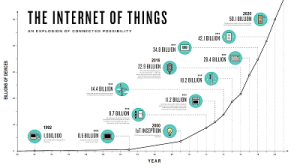 connected, the number of devices is 50 billion and the connection between devices may be even more surprising change that has happened to the internet.
connected, the number of devices is 50 billion and the connection between devices may be even more surprising change that has happened to the internet.
The protocols until recently were reduced, now new patterns begin to emerge beyond the known BlueTooth, arrives with force now ZBee or ZigBee.
The BlueTooth also evolved into the BlueTooth Low-Energy (BLE) or Smart Bluetooth, as old and known protocol for the Internet of things remains strong, since energy consumption is a significant item for the adoption of IoT technologies.
But ZigBee is growing in number of applications and devices, and start earning much interest in developers used in automation of homes, buildings and industrial areas, use an IEEE 802.15.4 standard protocol that is an industry standard wireless technology that operates to applications in the 2.4 GHz range require little data exchange and operate a range of 100 m, so excellent for homes, buildings and industrial.
An evolution of ZBee is the standard RF4CE which has some advantages for complex systems with low power consumption, high security, robustness and high scalability with the addition of nodes and can be inserted into wireless sensor control networks for M2M applications (Machine to Machine) in the IoT.
The latest version is ZBee 3.0, which unifies all ZigBee standards into a single standard.
There are other standards will comment in the next posts.
Sensor artificial tact
Among the various wearable technology (announced with the next ‘wave’), 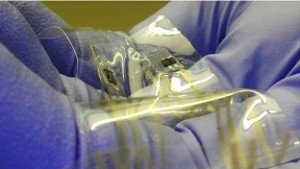 is the interesting work on an “artificial” feel, published in the jornal Science.
is the interesting work on an “artificial” feel, published in the jornal Science.
Second Zhenan Bao the researcher, flexible type of sensor produces a pulse pattern which is immediately recognized by the nervous system, while initially placed hand, this feature enables be used in other parts of the body.
The researcher said: “With plastic materials, we and other researchers in this area had already succeeded in producing touch-sensitive sensors – but the electrical signal coming out of these sensors was not the right format to be interpreted by the brain”.
Other models of computer processing needed to produce the sensation of “touch”, as this produces the pulses directly.
The use of plastic makes the flexible material, and the sensors can be useful in other wearable technology equipment, as stated, “The sensors are very thin and flexible, and are also elastic Then you could mount a sensor on your skin and use. it does to detect vital signs such as heart rate and blood pressure. ”
Just below this layer of “skin” for a printed electronic circuit that functions as an oscillator, which transforms the varying current in a series of impulses. With more pressure and more current, the rate of pulses rises.
Novidades IFA
Depois da da CES e do MWC, a IFA 2015 de Berlim é a maior feira de tecnologia do mundo, ela se encerra hoje (09/10) e já podemos conferir os destaques.
do mundo, ela se encerra hoje (09/10) e já podemos conferir os destaques.
Na feira a Samsung anunciou o Gear S1, um relógio inteligente, com formato parecido aos antigos já que é redondo e possui botões com as funções de Home e voltar, o comum e o classic, com pulseiras cinza escuro ou prata com pulseira branca.
Para competir com ele, parecendo ainda mais um relógio comum, mas com design e nas funções aprimoradas o Android Wear aparece como um smartwatch que pode competir no mercado dos chamados dispositivos vestíveis, a Asus lançou o ZenWatch 2 que não muda muito o modelo anterior.
A Sony lançou no evento Sony Xperia Z5, já disponível em algumas regiões do globo a partir de 699 euros (aproximadamente R$ 2807,00), mas ainda não sabemos quando ele pode chegar ao Brasil. A Acer lançou o Predator 6, um phablet com especificações ideiais para rodar games pesados, quatro alto-falante e um design um tanto polêmico.
A LG levou para o IFA não um smartphone, mas um acessório lançou um novo teclado externo tanto para tables como smartphones, feito com plástico ABS e policarbonato permite flexibilidade e resistência a choques.
Novo papel digital Sony
Lançado a um ano, o papel Digital Sony (Digital paper Sony) já está sofrendo 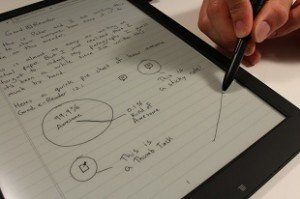 redução de custos e melhorando tamanho e formatos dos seus novos “papéis digitais”.
redução de custos e melhorando tamanho e formatos dos seus novos “papéis digitais”.
O papel digital vem sofrendo um crescimento robusto nas vendas, segundo o blog do editor Michael Kozlowski do Good E Reader, e o preço do DPT-S1 já caiu de U$ 999 para $ 799, e a intenção original que era se estabelecer numa faixa de leitores específicos, que querem ler o PDF e não consumidor da Amazon e da Kobo, por exemplo.
O Livro Digital Sony está experimentando vendas robustas para profissionais da indústria que exigem uma tela de e-paper grande. A fim de ampliar seu alcance e escopo, a Sony acaba de anunciar uma redução de preço no DPT-S1 a partir de $ 999 para $ 799.
O preço caiu logo de início com o crescimento das vendas, lançado a U$ 1200 para o ensino superior, advogados e também entretenimento, logo começou um serviço de vendas online e o preço começou a despencar.
Com o preço agora também consumidores de nível médio, o material de plástico flexível baseado em OLED (que é a tela “orgânica” flexivel), apesar de seu tamanho de 13,3 polegadas (quase um formato A4), ele pesa menos que um Kindle DX de 9″ ou 7”. O DPT-S1 tem tela de 13,3 polegadas, resolução de 1200×1600 pixels, armazenamento de 4 GB, com externo de micro SD até 74 GB, conectividade b/g/n e bateria Li-ion comduração de até 3 semanas e peso de 376 g.
Crowdsourcing of the smartphones
Is it possible to compete with the big brands and create thousands of 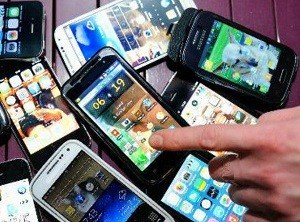 small business smartphones in the world? it seems so, is proposing the Shenzhen Zuoer Technology, which promises to help customers who want to build their brands around the world.
small business smartphones in the world? it seems so, is proposing the Shenzhen Zuoer Technology, which promises to help customers who want to build their brands around the world.
The customer chooses from a list of options like a menu from a pizzeria, and may enter the cellular industry for only $ 1,000, even without prior experience, the ultimate goal is to create a brand of smartphones with standard components to a price can reach $ per unit, incredible but true.
Accept applications by a minimum order of 50 units, Zuoer ride your own external plastic housing with LCD screens, circuit boards and batteries from other manufacturers. So any customer, anywhere in the world can compete with Samsung in the international mobile market of $ 410 billion in less than six weeks.
The MWC happens in Spain
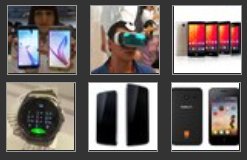 The Mobile World Congress (MWC) hosts releases and announcements from the world of mobile devices, and beyond the usual release smatphones, the highlight of the fair were the smart watches, held in Barcelona, the day 02-05 March.
The Mobile World Congress (MWC) hosts releases and announcements from the world of mobile devices, and beyond the usual release smatphones, the highlight of the fair were the smart watches, held in Barcelona, the day 02-05 March.
Other wearable devices such as smart bracelets and virtual reality goggles are some product categories vying for attention next to traditional phones.
Were presented new models of LG brands, Samsung, Sony, Huawei, with the Galaxy S6 Samsung, which promises new design, one of the biggest rumors of the event.
The fair was held at the Fira Gran Via known flag, with the presence beyond the companies in the sector, analysts and the press.
Gradually the other big news, go into the daily lives of people, there is still technophobes who do not cease to demonize the devices, but while using them.
Technologies expected in 2015
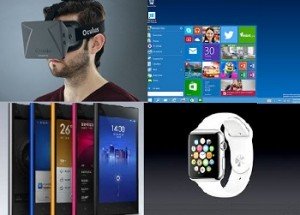 Finally accessible to users (there are already versions for developers), the glasses Oculus Rift and Google Glass, Apple Watch (slightly exaggerated in some detail), Windows 10 (jumped 9) arrives with likely improvements; the annoying scroll screens 8 and the Start button and the new Microsoft phones (Nokia), Samsung and Chinese.
Finally accessible to users (there are already versions for developers), the glasses Oculus Rift and Google Glass, Apple Watch (slightly exaggerated in some detail), Windows 10 (jumped 9) arrives with likely improvements; the annoying scroll screens 8 and the Start button and the new Microsoft phones (Nokia), Samsung and Chinese.
The Oculus Rift was the world champion sold kits, 75,000 kits to july last year when the company was bought by Facebook, promises to tackle the Google Glass, super advertised, commented, now promises to be entering the market, but the product arrived at Brazilian market for R $ 6,500.
Four days ago Google announced the end of the program and Google Glass disappeared.
Microsoft in this event last Wednesday (21/01) announced great news for Windows 10, including a new browser and new possibilities for games.
Around the start menu, but Windows 8 screen is still there, but now there is the possibility to leave everything on the home screen, without having to be “rolling” to the sides.
Microsoft will release Windows Phone 8.1 leaving aside the Nokia brand (although use this technology), Samsung launches its sixth model with versions in aluminum cover and the Chinese have occupied 38 market promising to overcome Apple’s iPhone in 10 years, according to Lenovo companies, Huawei and Xiaomi.
Not only consumerism is a need for flexible and advanced handsets to our tasks of everyday life, the cost is possible for Brazilians.
Holograms tactile
The invention comes from the University of Bristol, 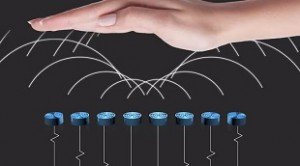 England, where through micro-speakers can touch and feel the images projected in 3D, as news in Daily Mail.
England, where through micro-speakers can touch and feel the images projected in 3D, as news in Daily Mail.
The technique is being called tactile holograms, and the effect is produced by the strong changes in the molecules that make up the air using small speakers that produce ultrasound, the virtual objects created by holograms, sensations in the hands in three dimensions.
The next necessary step now is that the technology integrates conventional holograms production technologies, giving the impression that he can play the virtual object, for example, transmitted video calls from a person, it would be possible to greet her.
The great application thought initially is in medicine, where holographic images of tumors could be played by doctors, helping the most accurate understanding of the size of the affected area, assisting the diagnosis and treatment of cancer.
New technology allows HD 24 Ter
Current technology allows hard drives of up to 3 Terabytes (3000 Gigabytes), but the technology developed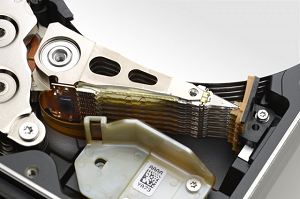 by the Japanese Hitachi now promises an HD 24 Terabytes.
by the Japanese Hitachi now promises an HD 24 Terabytes.
The development made together with NEDO (New Energy and Industrial Technology Development Organization), the technology has developed a breakthrough in miniaturization and organization more productively magnetic grains that make up the HD disks, reaching a size of 10 nanometers (1 billionth of centimeter).
Thereby increasing the density of an HD 8, which now rotates around 500 Gbits per square inch, thus reaching near Gbit 4000, which is a significant increase for a single disk.
Western Digital has launched the new 10TB hard drive in September, the same Helioseal using technology that debuted with the first 6TB WD hard drive in November 2013
Seagate announced a HD 8TB in July.
New Nokia tablet mimics iPad
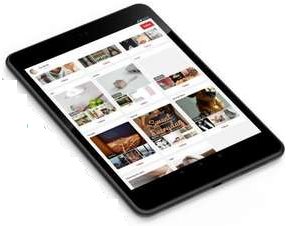 If you will buy a tablet may compensate wait a bit and not adhere to the consumerism of Christmas, a new tablet Nokia N1 is being launched in the first half of the year itself but using the Android operating system interface and very cheap.
If you will buy a tablet may compensate wait a bit and not adhere to the consumerism of Christmas, a new tablet Nokia N1 is being launched in the first half of the year itself but using the Android operating system interface and very cheap.
Still no word on the launch in Brazil or the US, but it is known that cost around $ 250 (has something around 750 brazilian reais), will be distributed by Foxconn, measures 7.9 inches and weighs 318 grams.
Much like how the iPad Mini, all aluminum equipment may bring news from € 5.7 million the Finnish Nokia has done with the Microsoft agreement, getting your business network and service equipment, with this brand expected to start to recover part of the lost market and re-strengthen.
The new Nokia N1 has 2 GB of RAM, internal storage of 32 GNB, camera 8 MPixel to adjust focus (back), 5 MP front camera and uses battery of 5300 mAh.
Worth the wait, chances are this tablet register on the cost-benefit ratio.

